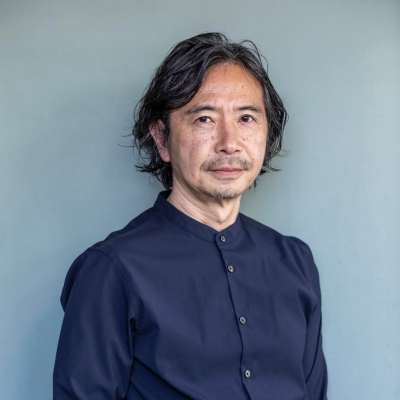
COLUMN
Search by keyword
- All
- Ryotei & Restaurants
- Lodging/Hotels
- Producers
- Technology
- DX (Digital) & SNS
- City Planning
- Utilization
- Gastronomy and Culinary
- Japanese Nature
- Japanese history and traditional culture
- Japanese Food Culture
- Agriculture
- Fisheries
- SDGs
- Local production for local consumption
- Foreigner Activation
- Experience
- Overseas Expansion
- Fermentation
- Public-private partnerships and collaborations
- Sake
- Community Revitalization
- Spirituality
- Japan of the Sea
- Mountain Japan
VIEW ALL
-
Read more

19 Understanding Value Shifts in the New Generation Through Social Listening
Today, more than 90% of the world’s populated areas are always connected to the internet. People interact digitally through social media and other online means, and capitalized on their reputations through shares, likes, and comments. This reputation permeates society as capital, and can be called evaluation capitalism . Until now, people have engaged in economic, lifestyle, cultural, and social activities using monetary capital, labor capital, social capital, industrial capital, and other capital as yardsticks. In today’s society, however, visualizing and analyzing this so-called evaluation capitalism, for example, what people around the world value, what they are interested in, and how their values have changed, is effective for recognizing the current state of society and predicting the future. The COVID-19 pandemic in particular has drastically shifted in people’s values and driven the creation of new frameworks for social systems, economic conditions, and national policies. Moving forward, my aim is to strengthen the three scientific viewpoints and use them to create a framework for the next generation of Cool Japan strategies. In Japanese, these three viewpoints are known as tori no me (bird’s-eye view: overarching analysis of the ecosystem), mushi no me (insect’s-eye view: observational analysis of mechanisms), and sakana no me (fish’s-eye view: comparative analysis of flows and trends). The Intellectual Property Strategy Headquarters at the Cabinet Office and the Cool Japan Public-Private Partnership Platform (CJPF) have released an infographic summarizing the key findings of their joint global social listening survey. While analysis of the results yielded a variety of findings, simply put, the survey indicated that the SC era is progressing, for example, sustainability, social, circular economy, and community. As the major shift in values which can be called the first year of green Cool Japan activities is needed, CJPF is reviewing its whole strategy with food and food culture as a starting point. Specifically, we have outlined three steps: discovery, empathy, and co-creation. Using both tangible and intangible resources of Cool Japan, we hope to create a companionate framework in which people from around the world and in Japan can transcend barriers and work together to create the next generation. We believe that reorganizing Japan’s cultural value from a global perspective and a future-oriented approach, and upcycling society and the economy on a regional scale are the new Cool Japan strategy of the future. As the first step, we have launched our on-demand media platform cjpf.jp to analyze so-called […]
-
Read more

15 A “Delicious” Economy to Change the Future of Society—Living in a Country with the Best Food in the World
Japan can perhaps be called the country with the best food in the world. In a global survey asking which countries people most want to visit after the pandemic, Japan was number one among people living in Asia and number two among those in Europe and the US. In both cases, Japan was at the top end of the list. Moreover, the number one reason people wish to visit Japan is said to be for its food. As this suggests, while many foreign visitors to Japan come in search of delicious food, Japan in fact has the highest number of Michelin-starred restaurants in the world. The total number of stars and three-star restaurants in Tokyo far exceeds that of Paris, which can be called the home of Michelin star framework. A characteristic of the restaurant industry in Japan is that many Japanese chefs have honed their skills not only in Japanese cuisine, but also in French, Italian, and other foreign cuisines, and have earned Michelin stars. Further, outside of Michelin stars, there are countless numbers of Japanese chefs who have won first place in international cooking competitions such as the Pasta World Championships and the World Pizza Championships. We can therefore say that Japan is the country that evolves tastes of other countries in more delicious way. Elsewhere, Japan has an abundance of delicious, seasonal foods from both the sea and the mountains. Thanks to an excellent supply chain, customers can consume these ingredients while they are still fresh. Meanwhile, advanced fermentation techniques developed in the preserved food culture have broadened the range of umami flavors. There are many positive aspects of Japanese food, such as the diversity of food culture, which varies from region to region, including traditional and local cuisine, and the high level of “seasoning technology” in factories producing seasonings and processed foods. Alongside its “deliciousness” technology, Japanese food is also highly regarded worldwide for its health benefits and for its lower environmental impact compared to Western food. In 2005, the number of Japanese restaurants overseas stood at approximately 25,000. In 2010 this number doubled to 50,000, and expanded to 150,000 in 2020. With such wonderful characteristics, it is essential that we seriously address how to maintain and develop our globally respected food culture. Doing so can help Japanese food culture maintain its dominance over the centuries. In a future of exploding world population, food will become […]
-
Read more

14 Food and Food Culture are Key to Environmental Solutions
Today we face various global issues, such as global warming due to human activities, loss of biodiversity, nitrogen pollution, and COVID-19. From Japan, it might seem like some of these are irrelevant matters in a faraway world. However, with products and information travel all across the globe in the blink of an eye, the world has gotten smaller. Things that have been pushed off as a hassle sometimes come back full circle. Japan procures food, animal feed, raw materials, and fuel from various countries worldwide, and bears a great deal of responsibility for future possibilities. That is, if Japan gets serious about solving these global issues, it can make the world better connected through trade. This is perhaps the very purpose of Cool Japan. Moving on, some of you may be unfamiliar with nitrogen pollution. Nitrogen is an essential element for proteins, nucleic acids, and other biomolecules. Humans absorb nitrogen from food proteins. Nitrogen (N2) is ubiquitous, and accounts for around 80% of the Earth’s atmosphere. However, N2 is incredibly stable and cannot do much by itself. Only when it is transformed into a reactive compound such as ammonia can it be used as a fertilizer for crop production, a raw material for industrial production, and a fuel for energy production. Technology for the artificial synthesis of ammonia was put to practical use in the early 20th century, and since then nitrogen has brought great benefits to us as a fertilizer for mass food production. That said, much of the nitrogen we use is released into the atmosphere in a reactive state. This in turn leads to a wide range of environmental problems such as global warming, stratospheric ozone depletion, air pollution, water pollution, eutrophication, and acidification. These combined environmental impacts are known as nitrogen pollution. Our world is huge but finite. Including ourselves, there are many different living things in the world, and we all influence and impact each other. Human activities have become so large that they have drastically changed the material cycle and in turn caused various environmental problems. In doing so, we have made the world more difficult for other organisms to survive. There are many things we can do to ensure that future generations can live in happiness, and to ensure that the world’s living things can remain as they are. Food is one element of our daily lives that is closely linked to global […]
-
Read more

13 Pointers for Circular Economies from Satoyama Culture
More than ten years have passed since COP10 was held in Nagoya and the world was introduced to the concept of satoyama—a unique environment where people and nature coexist in harmony— and the concept seems to be gradually taking root. Elsewhere, the impacts of climate change are becoming more apparent worldwide, and the COVID-19 pandemic has demonstrated the need for society to take a new direction. While the definition of circular economy seems to vary to region, the main concept is that—in contrast to a linear economy (use and dispose) and even reuse—a system where used products and materials disposed in the production process are reproduced into new products, given new value, and then sold again. In many rural regions of Japan, where the satoyama wisdom has been passed down from generations to generations, this circular approach is a core of people’s lives and continues to this day. With rice, for example, the ingredient in Japanese sake and sushi, both of which are becoming increasing popular worldwide, an incredibly efficient cycle has been in place for generations. It is a well-known fact that sake lees, a byproduct of sake brewing, are used to make amazake (a sweet, non-alcoholic sake) and a wide range of pickles including Narazuke. Meanwhile, in the production of daiginjo and other types of sake with high rice polishing ratio, a large amount of rice flour is generated as a byproduct. This rice flour is reused in rice crackers and dumplings. Rice bran is another byproduct of the production process, and in the Hida area of Japan where I live, this has been reused as a kind of wax for polishing the floors and pillars of wooden houses for many years. Further, after the rice bran has been used to care for the home, it is then scattered onto nearby fields, returned to the soil, and reused as fertilizer for new crops. Examples such as these are too numerous to see throughout satoyama areas. Another example can be seen in the use of the kaya grasses used to make thatched roofs, such as those in the UNESCO World Heritage site of Shirakawa-go. Harvested grass is used as snow shelters in the drying process, and then used for thatched roofs after drying. Later, part of the roof that have been damaged by wind and rain is removed and reused as livestock feed. This is then digested by the […]
-
Read more

11 The Direction of Japan as a Tourism Hotspot—Terroir and SBNR through VISON
The French word terroir, frequently used in the wine industry, comes from another French word, terre, meaning “land.” Terroir refers to a combination of natural factors that give products their unique, locally rooted characteristics, including geography, terrain, and climate. At BuzzFeed, which is one of the largest digital media outlets in the US and Japan, we feature various articles from a diverse range of fields. During the pandemic, however, when there were restrictions on returning home and other forms of travel, there was a particular rise in interest in news about locally rooted food. In FY2021, we released 34 articles tagged #deliciouslocalfood, which were shared more than 25,000 times on social media, accumulating more than 1.25 million views. In this article, I would like to consider how to apply current reader interest to post-COVID-19 tourism. VISON, one of Japan’s largest commercial resorts, opened in July 2021 in Mie Prefecture based on the concept “Alongside Our Region.” Mainly through markets offering fresh fish from the nearby Kumano-nada sea and fresh local vegetables, as well as restaurants and hotels, VISON aims to provide experiences based on “healing, food, and knowledge,” combining tradition and innovation to revitalize and create new regional economies. At the same time, VISON also plays a key role in solving regional issues that are common throughout rural areas in Japan, including population decline, ageing communities, and worker shortages in agriculture and forestry. The core concept of this resort is terroir, or in other words, local production for local consumption. By providing this terroir and attracting people from outside the region—who typically spend more than local customers—, the region can acquire foreign currency. In turn, this can help maintain high wages and ensure high-quality local employment. Using cuisine to communicate the appeals of the region’s ingredients, culture and worldviews to visitors from outside the region can ultimately help to solve the issues that the region faces. To solve local issues through the new employment of 1,000 people, VISON is aiming to attract around eight million visitors a year, which is around the same number as one of Mie’s most popular tourist destination, Ise Jingu Shrine. Meanwhile, interest in “spiritual but not religious (SBNR)” activities, such as mindfulness, meditation, and yoga, is growing on a global scale. According to the Pew Research Center in the US, approximately a quarter (27%) of American adults consider themselves to be SBNR. The prolonged pandemic […]
-
Read more

10 The Course of Action for Plant-based Gastronomy—Our World in 2050
The outbreak of the COVID-19 pandemic in 2020 has led to drastic changes in today’s lifestyles and habits, and there is a sense throughout society that we have entered a new phase. At the same time, we are also beginning to feel the impacts of worldwide social issues such as global warming in our daily lives. For example, in addition to torrential downpours becoming the norm in recent years, every year we are seeing typhoons of record-breaking scale. We are also experiencing major changes elsewhere, with declining fish catches, seasonal changes, and poor harvests of previously stable vegetables and other crops. As civilization has advanced and the quality of our lifestyles has improved, unknowingly, we have also been causing huge damage to the global environment. Further, with a global population explosion on the horizon, some say that we will require two earths if we are to continue with our current way of life. Against this backdrop, countries across the world are coming up with diverse ideas to tackle these environmental issues, engaging in various initiatives to rebuild the planet. In gastronomy, eating is the common denominator among people worldwide that is essential to sustaining life. I believe that food can provide one solution to these environmental issues, and have realized the importance of promoting and developing environmentally friendly lifestyles through food. A plant-based diet is one solution that can have an effective outcome for the global environment. This plant-based diet has been closely related to the Japanese diet since ancient times. One example is shojin ryori, a vegetable-based Buddhist cuisine, which is a key part of Japanese food culture. Shojin ryori was first introduced to Japan in the 13th century. A lack of logistics at the time meant that individuals would source local, seasonal ingredients themselves, only taking the necessary amount to ensure harmony with nature and show their appreciation for nature’s blessings. This was a self-sufficient, sustainable way of life. This ancient approach can help us rethink the gluttony in modern society. My hope is to promote lifestyles that can have a positive effect on both health and the environment. With the knowledge that I can help people improve the environment in a stress-free manner through dining, whether at home or restaurants, I have therefore taken action. One initiative that I have developed for society is the 1,000 Vegan Project, through which we aimed to switch from regular meals […]
-
Read more

8 The Changing Roles of Chefs in Green Jobs and the Role of Career Education in Japan
The United Nations has said that up to 37% of the world’s greenhouse gas emissions come from global food systems. As we all reap the benefits of these food systems, we all play a role in global warming. As such, it is essential that we reexamine consumer behavior that up until now has been indifferent to environmental issues, and that we change our routines accordingly. Economic strategy in post-COVID-19 Europe has been focused on “green recovery”, and as one example, the European Commission has formulated the Farm to Fork Strategy. In Japan, too, the Ministry of Agriculture, Forestry and Fisheries is currently putting in place various environmental policies. Key to these strategies and policies is consumer education. While the fact that these economic strategies take a so-called product-out approach remains unchanged, what is important is to generate demand. To make the transition to more environmentally conscious consumer behavior, efforts in Europe to make environmental education a compulsory part of primary education are progressing, and similar efforts in Japan will no doubt follow suit. Having consumers acquire complete knowledge of environmental issues will help to promote the shift away from this indifferent mindset. However, there are limits to what compulsory education and a sense of responsibility can bring. Added value associated with environmental awareness must exceed price and quality. The automotive industry, for example, has been a gamechanger in linking environmentally conscious consumer behavior to status. In the same way, food systems must aim to link consumer behavior to a more enriched society. The ability to do so will be the key moving forward. For example, the goal for sustainable food systems could be to create decentralized societies or circular and ecological societies. This would ensure that, rather than local consumers feeling like they have to consume local ingredients and organic ingredients, doing so would help to create successful industries based on local food cultures. Goals such as these could be a significant driving force behind the transition to sustainable, abundant food systems. In Europe and US, there has been increasing attention on the role of chefs, whose responsibility in food systems is to create added value. They are also seen as influencers. Recently, it is not uncommon for chefs to have their own vision for society based on a complete viewpoint. The Michelin Guides, which assess restaurant quality, have begun awarding restaurants with Green Clover symbols. These symbols recognize a […]
-
Read more

3 Japan’s Coexistence with Nature and Expectations for the Future of Food Culture in Society
The Ise Jingu Shrine hosts approximately 1,500 festivals and rituals each year, but perhaps the most important one is the Kannamesai festival, which is a symbol of Japan’s rice culture. Among these annual festivals, the Shikinen Sengu ritual is said to be the shrine’s most solemn ceremony, that the shrine’s deity (the sun goddess Amaterasu) is transferred to a new shrine building every twenty years. This In the Man’yoshu book of poems and other classical texts, the Ise Jingu Shrine is so called as Kamukaze no Ise, or Ise of divine winds. “Divine winds” brings to mind a gentle climate, natural features, and sufficient amount of rain for abundant harvests. I believe it is the ideal representation of Ise. Moreover, according to the Nihon Shoki, or Chronicles of Japan, during the reign of Emperor Suinin, Amaterasu said to Yamatohime-no-mikoto, “This Ise of divine winds is a province where the waves of heaven continuously reach the shore.” Amaterasu is a symbol of the sun, and her words imply the sun, the wind and the waves nurtured the nature of Ise, and show how the sacred city exists as one with nature. Food, clothing, and shelter are essential for humans These three elements are also an essential part of the Shikinen Sengu, which was first conducted around 1,300 years ago. Here I would like to focus on the food that have been offered forshrine deities throughout the shrine’s long history. Today, global environmental consideration are growing and the increase in greenhouse gas emissions and the disposal of leftover food are frequently broadcasted on news. I believe that the food culture at Ise Jingu Shrine could contribute to the future of global society. According to a record from 804 (Enryaku 23) of the ceremonies held at the Kotai Jingu Shrine, which is the inner shrine at Ise, at the Tsukinamisai festival held on June 15, local peasants from Shima province offered abalone and turban shells to the deities. Meanwhile, in chapter 4 of the Engishiki (Procedures of the Engi Era; completed 927 (Engi 5)) , which is about ceremonies at the Ise Jingu Shrine, offerings at three important shrine festivals were said to be dried foods, sea slugs, skipjack tuna, seaweed, salt, and oil. In the medieval text Jinposho—a list of districts within the Ise Jingu Shrine —we can see that, including from 14 districts in Ise province, the inner and outer shrines […]
-
Read more

1 The Future of the UNWTO’s Gastronomy Tourism Initiatives
According to a survey by the World Tourism Organization (UNWTO), in recent years, the number of tourists who prioritize experiencing the regional lifestyles and cultures of their destination by enjoying the local cuisine is increasing at around the same rate as those who visit tourist hotspots. These tourists have a strong desire for authenticity and tend to consume more than the average tourists. Gastronomy tourism is defined as “A form of tourism that aims to experience the local culinary culture and to enjoy food nurtured by the ingredients, culture, customs, traditions and history created by the local climate.” In today’s post-COVID-19 society, overtourism and other tourism issues prior to the pandemic have made initiatives for the SDGs more important, while awareness of the importance of sustainable tourism—in terms of the economy, society, culture and environment—is gradually increasing. Gastronomy tourism is closely linked to the local natural environment, agriculture and culture. Further, gastronomy tourism, which anyone can participate and which contribute to participants’ health and happiness, can be considered an effective way for achieving sustainable tourism. Moreover, the origins of many types of cuisine can be found in the local history and culture. Food is therefore an ideal contents to highlight a region’s characteristics, and can be one of the great pleasures of travel. In a survey conducted by the Japan Tourism Agency, the primary attraction for foreign tourists visiting Japan was “eating Japanese food”, while in sixth place was “drinking Japanese sake”. As a result of the above, local governments around Japan are proactively engaging in gastronomy tourism initiatives to achieve regionaldevelopment. The UNWTO lists the following five reasons for the focus on gastronomy tourism: (1) It is an effective way for regions to differentiate themselves; (2) it can provide visitors new values and experiences; (3) it can be initiated even in regions with few tourism resources; (4) it is conducive to tell regional stories; and (5) it promotes tourists to revisit. Below are three initiatives led by the UNWTO for gastronomy tourism. The first is a report that the UNWTO published in 2019 called Gastronomy Tourism – The Case of Japan. This report features 18 excellent examples of gastronomy tourism activities in Japan. The report follows a survey of Japan’s 1,741 municipalities, of which 584 responded. It shows that gastronomy tourism activities in Japan are more comprehensively focused on sustainable regional development and collaboration with agriculture than tourism promotion […]

